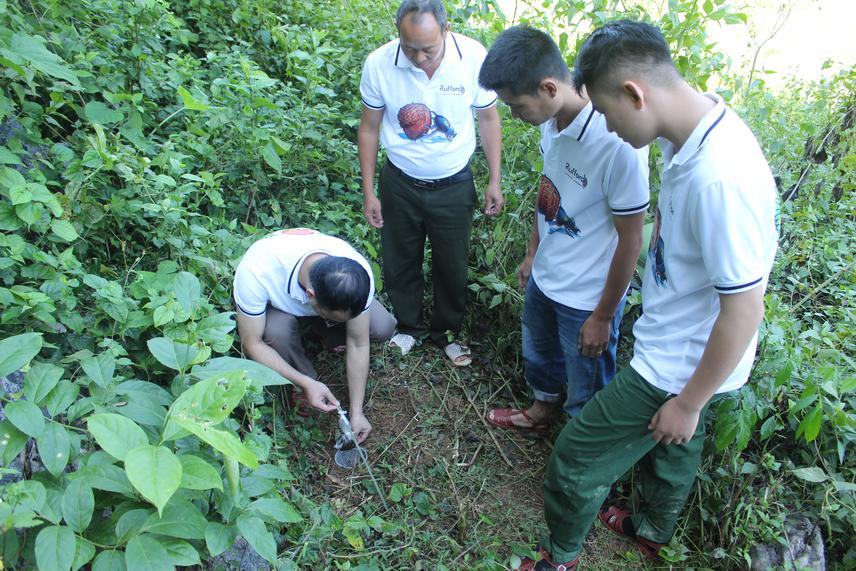Văn Bắc Bùi
Other projects
10 May 2023
Assessing the Conservation Status of Dung-Beetle Species in the Genus Synapsis Bates (Coleoptera: Scarabaeidae) in Tropical Karst Ecosystems of Vietnam
Tropical forests on limestone parent rock material are unique to Southeast Asia and with 60,000 km² they comprise an important landscape element of Vietnam. The karst ecosystems provide habitats for a unique fauna and flora with a high percentage of endemic species (Clements et al. 2006). Unfortunately, the karst ecosystems have been increasingly disturbed due to forest conversions to anthropogenic land-uses. In respect of the high degree of endemic species in karst regions, this is likely to have negative consequences for species conservation and ecological processes.

Field training courses to dung-beetle sampling. © Bui Van Bac
Dung beetles (Coleoptera: Scarabaeidae) are widely recognized as a good indicator group, because they respond rapidly to changes in the physical structure of habitats. In addition, dung beetles primarily feed on and breed in mammal dung, therefore they are expected to have associations with mammals (Effiom et al. 2013, Nichols et al. 2007). Although the consequence of forest disturbance for dung-beetles has received special attention in many tropical forests (Gardner et al. 2008), still little is known about the functional diversity and community composition of dung beetles in tropical karst ecosystems. The main aim of this project is to investigate how progressive environmental changes along a forest disturbance gradient affect community composition and functional diversity of dung beetles in low elevation karst ecosystems of Huu Lien NR (northern Vietnam). Additionally, the project is expected to provide quantitative information on the value of specific types of disturbed forests for conservation of dung beetles as well as their strong associations. Furthermore, we seek to provide effective solutions for the biodiversity conservation of dung beetles in the study area. The project activities will include:
(1) Examining changes in community composition and functional diversity of dung beetles along the forest disturbance gradient from primary forests, old secondary forests and young secondary forests to plantation forests in the study area.
(2) Detecting environmental factors that significantly affect community structure; and deciphering the links between environmental factors and community traits.
(3) Determining main threats to conservation of dung-beetles as well as their associations.
(4) Enhancing capacity and raising awareness among local stakeholders in dung-beetle conservation.
(5) Providing scientific publications to strengthen both academic research and the dung-beetle conservation throughout Vietnam.